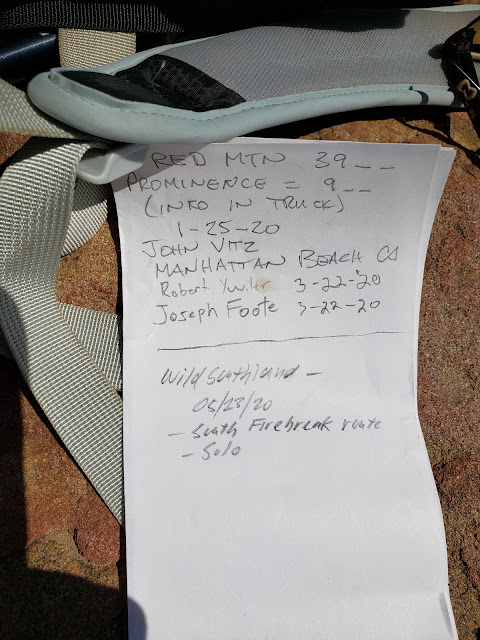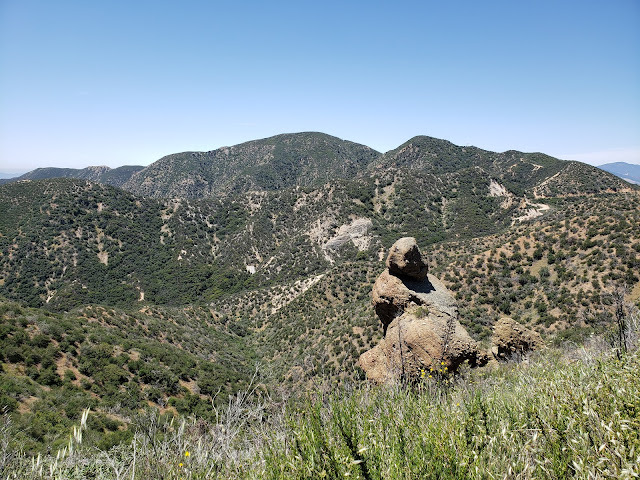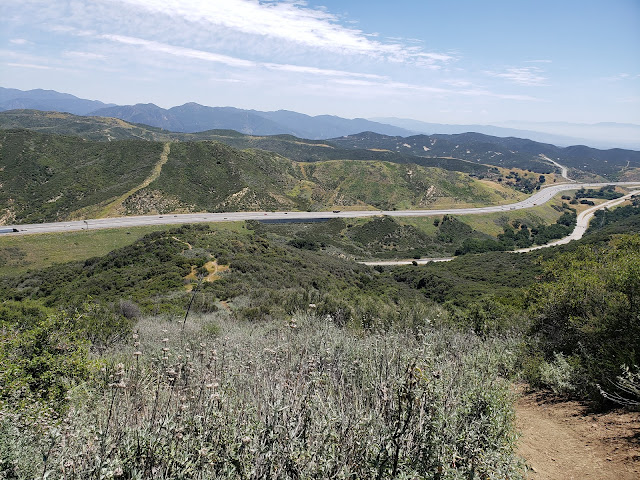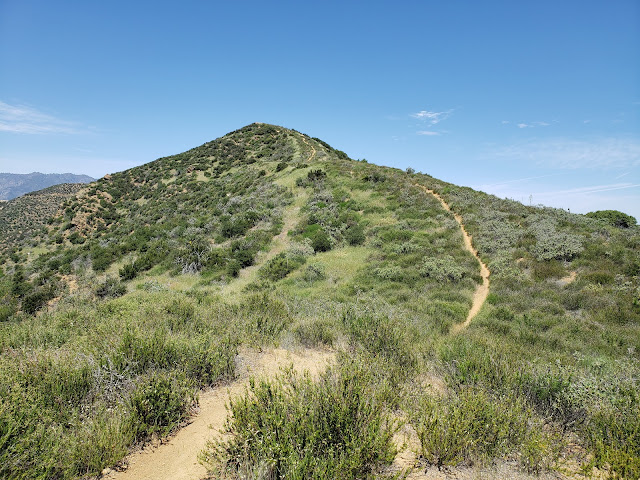Red! I want red, there's not substitute for red
Red! Paint it red, green ain't mean compared to red.
~Red, Sammy Hagar
The Memorial Day weekend. The traditional start of summer. You know, the 3-days in May when folks that don't usually spend time outdoors unpack their tents and sleeping bags and propane stoves and massive coolers and firewood and boom-boxes and other camp-life accouterments and head for the mountains or forests to temporarily squat in the dirt in close proximity to others, stay up drinking and hollering into the wee hours of the morning before passing out, and rising badly hung-over at the break of dawn to repeat the cycle. Yeah, that weekend. It's typically an unpleasantly frenetic time to be out as "irregulars" swarm the great outdoors, finally unrestrained by the cool, dim days of winter. That communal need to break out is particularly acute this year. For this is the year of COVID. Thus, and either because of self-restraint or governmental edict, most people have not ventured too far from their home turf for the last couple of months. Now their feet are itchy. And Memorial Day weekend is an opportune time to finally scratch that itch.
Like every red-blooded, patriotic American, I wanted to scratch too. My conundrum was that I wanted none of baggage and risk that comes with rubbing feet and shoulders with a gaggle of my potentially virus-infected citizens. Or perhaps that's just an excuse. Maybe I'm really an anti-social, elitist that is just using the pandemic to justify my isolationist tendencies. I admit that possibility. Either way, what it meant for me was once again finding a place that very few people want to visit. After scouring the maps, that place appeared to be Red Mountain.
At 3,996', Red Mountain is a relatively unsexy peak located in a sort of no-man's land of the Angeles National Forest. Sandwiched between Elizabeth Lake and San Francisquito Canyons, Red Mountain sits sentinel high above the Fish Arm of Castaic Lake which is visible to the south. There are no established trails or fire roads leading to its summit. Trip reports are difficult to find. But satellite imagery shows an obvious firebreak carved into Red's steep southern ridge that ultimately tops out on the summit. That firebreak must be courtesy of the Powerhouse Fire that burned a good chunk of the forest to the immediate north in 2013.
The ridge route begins from a dirt parking area along Dry Gulch Road about 0.6 miles to the east of Lake Hughes Road. It starts as a jeep road that immediately ascends a short, steep hill and then morphs into the firebreak. Shot-gun shells and sparkling broken glass litter the area which has been abused like many other easily-accessible areas of the Angeles.
The firebreak itself is slowly being reclaimed by mother nature. Brush impedes the way forward or encroaches onto the path in several locations, although it is easily manageable. For now, a rogue motorcycle track is keeping a narrow path open and visible. In a few years or less, that track will inevitably vanish under a thick carpet of wild grasses, chamise, black mustard, yucca, and other unfriendly flora. Unless, of course, another wildfire torches the area which, in Southern California, is always a possibility.
Given its southern exposure, the route up Red's firebreak is a hot and shadeless march. It's also a steady climb from bottom to top that begins modestly, but then gets serious quite quickly. In a number of places, the slope is so mercilessly and relentlessly steep that it is difficult to maintain your footing. It's truly impressive to think about the guys who ran a dozer up this damn ridgeline to create the break.
That is not to say that it is all up. The firebreak continually roller-coasters up and down all the way to the 3,600' contour where it intersects with Red's eastern ridgeline. As a result, the track drops sharply in a number of spots before resuming its upward trajectory. Consequently, the climbing isn't done once you reach Red's summit. You get approximately 400-500' of climbing on the return as well which is a bit demoralizing.
Lower Section of the Firebreak
One of several drops along the ascent
About the mid-way point. Red in the background.
One of the steeps climbs on the way "down."
So with all of that glamour, who could possibly resist the allure of Red Mountain as a destination hike? As it turns out, pretty much everybody. The day I went I didn't see a single soul which was fine by me. And that appears to be the norm with this particular peak. On the flat summit, there is a large cairn that houses a summit register. That register, which dates to January, 2020 only had two other entries. One in January by the climber who originally placed the register, and a second in March of 2020. My entry made it a total of three in a five month period. Not much action for a peak that is within spitting distance of 15 million or so folks.
And in a sense, that is unfortunate because of the somewhat unique views that Red affords of the surrounding area. Looking south from Red's summit you get nice views of Castaic Lake and lower San Francisquito Canyon. To west you can see Warm Springs Mountain and its associated ridge. To the north, Lake Hughes is visible at the head of Lake Elizabeth Canyon.
Based upon the USGS and Forest Service topographic maps, there are two benchmarks on the summit of Red: "VABM 3996" and "Red." They are both supposed to be in close proximity to one another near the high point, but I wasn't successful in locating either of them. Then again, I wasn't that terribly diligent in my search either. I suppose finding those benchmarks will have to await my next visit.
After a half-hour on the summit, I started back down the eastern ridge, lost in thought and dreading the several steep climbs I knew were still ahead. Then, the terrain suddenly began to look unfamiliar and Red looked considerably more distant over my shoulder than it should have been. Trying to make sense of situation, it finally occurred to me that while I was day-dreaming, I had over-shot the firebreak. So I had to back-track up the ridge to the firebreak junction adding some additional, gratuitous climbing to the outing.
I don't normally keep stats, but on this outing I used my snazzy View Ranger app. According to it, the trek to Red is roughly 7.7 miles with approximately 2,680 feet of elevation gain. It took me 4.5 hours to make that journey which probably sounds slow, but I wasn't out to make time. I was out to spend time. Alone. Far from the madding crowds. And you can accomplish both of those lofty objectives on the trek to Red Mountain.
Summit Cairn
Summit Register
View West to Warm Springs Mountain
View South to Castaic Lake
View North to Lake Hughes
Elevation Profile

























